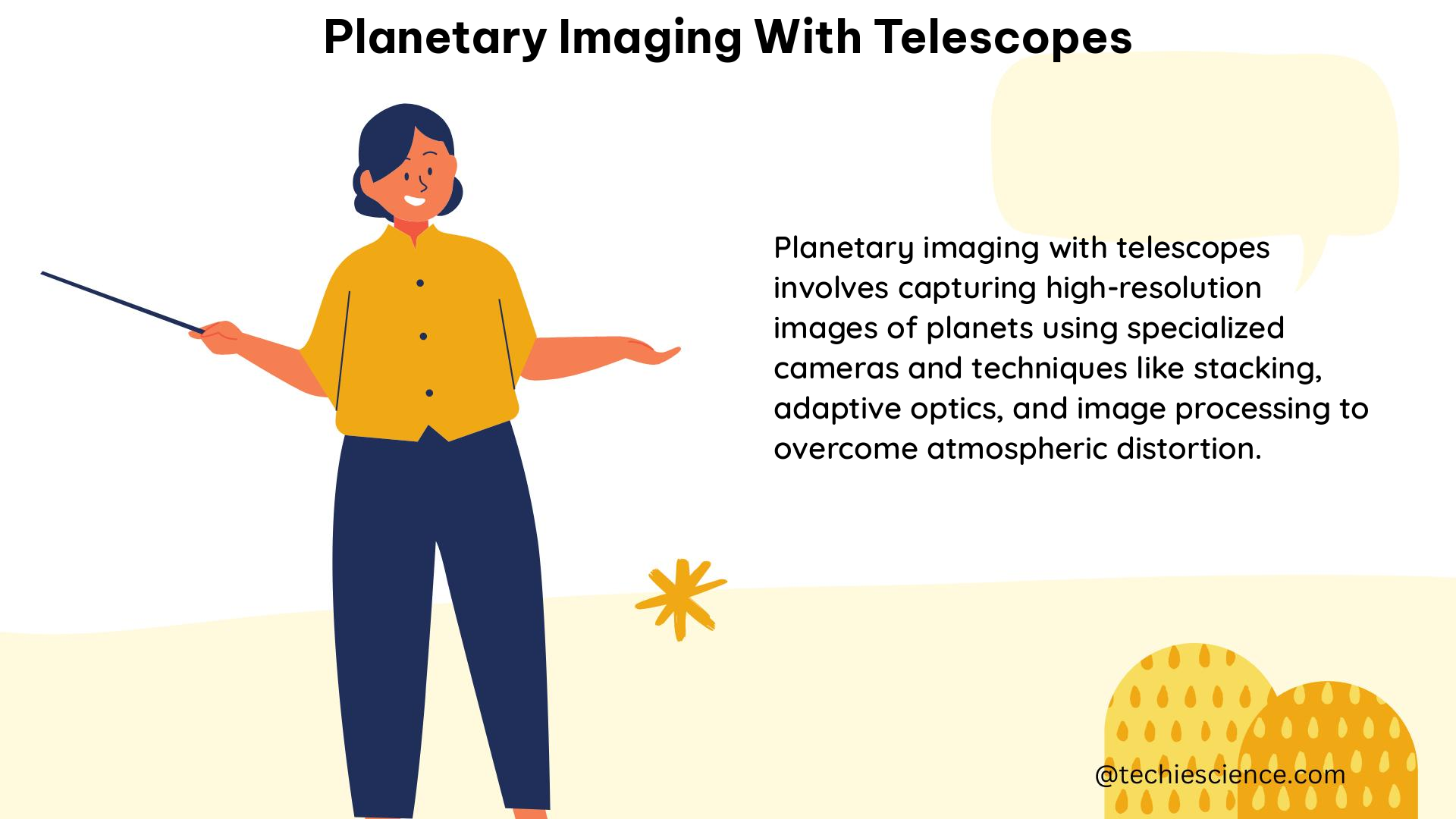Planetary imaging with telescopes involves capturing high-resolution images of planets, the sun, and the moon within our solar system. This process requires a deep understanding of various factors, including the telescope’s focal length, aperture, and the camera’s pixel size, to achieve the desired level of detail and clarity in the captured images.
Telescope’s Focal Length
The focal length of a telescope is a crucial factor in determining the sharpness and detail of the captured images. Longer focal lengths provide higher magnification, allowing for greater detail to be observed. For optimal planetary imaging, telescopes with a focal length of around 2000mm or more are typically recommended.
One popular choice for planetary imaging is the Schmidt-Cassegrain Telescope (SCT), such as the Celestron C11. These telescopes offer a long focal length (typically around 2800mm) in a compact design, making them an excellent option for capturing detailed images of planets.
Telescope’s Aperture

The aperture of a telescope, which is the diameter of the primary mirror or lens, is another critical factor in planetary imaging. A larger aperture allows for more light to be collected, which in turn enables the resolution of finer details on the planets. Telescopes with larger apertures, such as 8-inch or 11-inch SCTs, are often preferred for their ability to capture high-resolution planetary images.
Camera’s Pixel Size
The pixel size of the camera used in planetary imaging also plays a significant role. Smaller pixels can capture more detail, but they are also more susceptible to atmospheric turbulence, which can blur the images. Larger pixels, on the other hand, may not capture as much detail but are more resistant to atmospheric disturbances.
When selecting a camera for planetary imaging, it is essential to consider the pixel size and the overall sensor size. Cameras with larger sensors and smaller pixels, such as those found in DSLR or mirrorless cameras, are often preferred for their ability to capture more detail.
Capture Duration
The rotation of the planets can cause features to smear when stacked, leading to blurred images. To mitigate this issue, it is recommended to keep the individual capture duration within certain limits. For example, for Jupiter, it is suggested to keep the captures below 60 seconds, preferably around 45 seconds.
Software like WinJupos and AutoStakkert can help in processing the captured frames and reducing the blurring caused by the planet’s rotation.
Lucky Imaging Technique
The lucky imaging technique involves capturing hundreds of frames per second using software like FireCapture. This high-speed capture allows for the selection of the sharpest frames, effectively discarding the blurry ones affected by poor atmospheric seeing conditions.
By selecting only the sharpest frames, the lucky imaging technique can significantly improve the overall quality and detail of the captured planetary images.
Frame Rate
The frame rate of the camera used in planetary imaging is also crucial. Higher frame rates can capture more detail, especially during periods of excellent seeing conditions. Cameras with frame rates of 30 frames per second or higher are often preferred for planetary imaging.
Image Stacking
Similar to deep-sky imaging, planetary images benefit from stacking multiple frames to reduce noise and improve the overall image quality. Software like PIPP (Planetary Imaging PreProcessor) is designed specifically for pre-processing planetary images before stacking, allowing for the selection of the sharpest frames and cropping them to the desired field of view.
By stacking multiple frames, the signal-to-noise ratio is improved, resulting in cleaner and more detailed planetary images.
Advanced Techniques and Considerations
In addition to the factors mentioned above, there are several advanced techniques and considerations that can further enhance the quality of planetary imaging:
-
Atmospheric Dispersion Corrector (ADC): An ADC is a device that can compensate for the dispersion of light caused by the Earth’s atmosphere, which can lead to color fringing around the edges of the planets. Using an ADC can help improve the overall sharpness and clarity of the captured images.
-
Adaptive Optics: Adaptive optics systems can actively correct for atmospheric turbulence, providing a more stable and sharper image. These systems are particularly useful for planetary imaging, as they can help mitigate the blurring effects of the Earth’s atmosphere.
-
Cooling the Camera: Cooling the camera sensor can help reduce thermal noise, which can improve the signal-to-noise ratio and enhance the quality of the captured images.
-
Planetary Imaging Filters: Specialized filters, such as narrowband filters or color filters, can be used to enhance specific features or wavelengths of the planets, providing more detailed and informative images.
-
Planetary Imaging Software: In addition to the software mentioned earlier, there are various other tools and applications designed specifically for planetary imaging, such as Registax, RegiStax, and PIPP. These software packages offer advanced processing and stacking capabilities to further refine the captured images.
By understanding and applying these techniques and considerations, amateur and professional astronomers can capture stunning, high-resolution images of the planets, the sun, and the moon, providing valuable insights into the workings of our solar system.
References
- Planetary Imaging Concept Testbed Using a Recoverable Experiment Coronagraph (PICTURE-C)
- Planetary Imaging FAQ (Updated May 2024)
- High-Resolution Planetary Imaging Guide: Part 4 – Imaging Software and Processing
- A Quick Guide to Planetary Imaging
- Planetary Imaging 101

The lambdageeks.com Core SME Team is a group of experienced subject matter experts from diverse scientific and technical fields including Physics, Chemistry, Technology,Electronics & Electrical Engineering, Automotive, Mechanical Engineering. Our team collaborates to create high-quality, well-researched articles on a wide range of science and technology topics for the lambdageeks.com website.
All Our Senior SME are having more than 7 Years of experience in the respective fields . They are either Working Industry Professionals or assocaited With different Universities. Refer Our Authors Page to get to know About our Core SMEs.